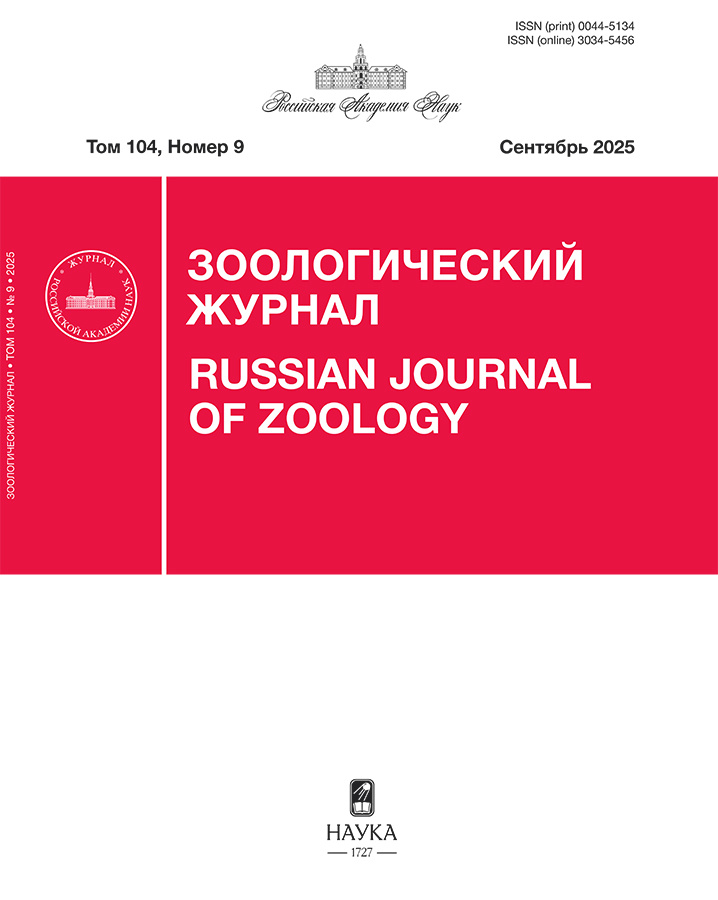Adaptation of Larval Development of the Common Frog (Rana temporaria) to a Shorter Activity Season and Its Putative Genetic Basis
- Autores: Lyapkov S.M.1, Scobeyeva V.A.1
-
Afiliações:
- Biological Faculty, Moscow Lomonosov State University
- Edição: Volume 104, Nº 9 (2025)
- Páginas: 21-25
- Seção: ARTICLES
- URL: https://edgccjournal.org/0044-5134/article/view/692220
- DOI: https://doi.org/10.31857/S0044513425090031
- ID: 692220
Citar
Texto integral
Resumo
The development of most amphibian species occurs in an aquatic environment and the duration of larval development largely depends on the ambient temperature. As shown earlier (Richter-Boix et al., 2011), natural selection may influence the frequency of alleles of the RC08604 locus which lies in the regulatory region of the thyroid receptor gene TRβ, in populations of Rana arvalis living in conditions with varying average annual temperatures. Our study of the allelic composition of microsatellites, including the RC08604 locus, in Rana temporaria of an introduced population from Kamchatka and from the native range of the species from the Moscow Region shows that the differences between these populations in Fst of the study microsatellite loci can be considered insignificant, except for the RC08604 locus. This difference of the RC08604 locus from other loci corresponds to a faster growth up to metamorphosis in larvae from the Kamchatka population. This difference in larval growth rate was revealed through breeding under the same laboratory conditions. Apparently, the differences between the two study populations are the result of a rapid adaptation of the Kamchatka population to a comparatively short activity season. This could have been developed only 10 years following the formation of that population.
Palavras-chave
Sobre autores
S. Lyapkov
Biological Faculty, Moscow Lomonosov State University
Email: lyapkov@mail.ru
Moscow, 119234 Russia
V. Scobeyeva
Biological Faculty, Moscow Lomonosov State UniversityMoscow, 119234 Russia
Bibliografia
- Ляпков С.М., 2016. Травяная лягушка (Rana temporaria) на Камчатке: формирование первой популяции // Современная герпетология. Т. 16. Вып. 3/4. С. 123–128.
- Ляпков С.М., 2016а. Географическая изменчивость характеристик метаморфов травяных лягушек // Вестник СПбГУ. Т. 3. № 3. С. 86–91.
- Ляпков С.М., 2019. Возрастной состав и особенности постметаморфозного роста травяной лягушки (Rana temporaria) из популяций с экстремально коротким сезоном активности // Известия высших учебных заведений. Поволжский регион. Естественные науки. Т. 2019. № 1. С. 96–104.
- Hjernquist M.B., Söderman F., Jönsson K.I., Herczeg G., Laurila A., Merilä J., 2012. Seasonality determines patterns of growth and age structure over a geographic gradient in an ectothermic vertebrate // Oecologia. V. 170. № 3. P. 641–649.
- Laugen A.T., Laurila A., Räsänen K., Merilä J., 2003. Latitudinal countergradient variation in the common frog (Rana temporaria) development rates – evidence for local adaptation // Journal of evolutionary biology. V. 16. № 5. P. 996–1005.
- Meyer-Lucht Y., Luquet E., Johannesdottir F., Rödin-Mörch P., Quintela M., Richter-Boix A., Höglund J., Laurila A., 2019. Genetic basis of amphibian larval development along a latitudinal gradient: Gene diversity, selection and links with phenotypic variation in transcription factor C/EBP-1 // Molecular Ecology. V. 28. № 11. P. 2786–2801.
- Palo J.U., O’Hara R.B., Laugen A.T., Laurila A., Primmer C.R., Merilä J., 2003. Latitudinal divergence of common frog (Rana temporaria) life history traits by natural selection: evidence from a comparison of molecular and quantitative genetic data // Molecular ecology. V. 12. № 7. P. 1963–1978.
- Peakall R., Smouse P.E., 2006. GENALEX 6: genetic analysis in Excel. Population genetic software for teaching and research // Molecular Ecology Notes. V. 6. № 1. P. 288– 295.
- Peakall R., Smouse P.E., 2012. GenAlEx 6.5: genetic analysis in Excel. Population genetic software for teaching and research – an update // Bioinformatics. V. 28. № 19. P. 2537–2539.
- Richter-Boix A., Quintela M., Segelbacher G., Laurila A., 2011. Genetic analysis of differentiation among breeding ponds reveals a candidate gene for local adaptation in Rana arvalis // Molecular ecology. V. 20. № 8. P. 1582–1600.
- Richter-Boix A., Quintela M., Kierczak M., Franch M., Laurila A., 2013. Fine-grained adaptive divergence in an amphibian: genetic basis of phenotypic divergence and the role of nonrandom gene flow in restricting effective migration among wetlands // Molecular Ecology. V. 22. № 5. P. 1322–1340.
- Richter-Boix A., Teplitsky C., Rogell B., Laurila A., 2010. Local selection modifies phenotypic divergence among Rana temporaria populations in the presence of gene flow // Molecular ecology. V. 19. № 4. P. 716–731.
- Rödin-Mörch P., Luquet E., Meyer-Lucht Y., Richter-Boix A., Höglund J., Laurila A., 2019. Latitudinal divergence in a widespread amphibian: Contrasting patterns of neutral and adaptive genomic variation // Molecular Ecology. V. 28. № 12. P. 2996–3011.
- Rowinski P.K., Laurila A., Gotthard K., Sowersby W., Lind M.I., Richter-Boix A., Eckerström-Liedholm E., Rogell B., 2020. Parental effects influence life history traits and covary with an environmental cline in common frog populations // Oecologia. V. 192. № 4. P. 1013–1022.
- Sambrook J., Russell D.W., 2006. Isolation of high-molecular-weight DNA from mammalian cells using proteinase K and phenol // Cold Spring Harbor Protocols. V. 2006. № 1. P. pdb–prot4036.
Arquivos suplementares










